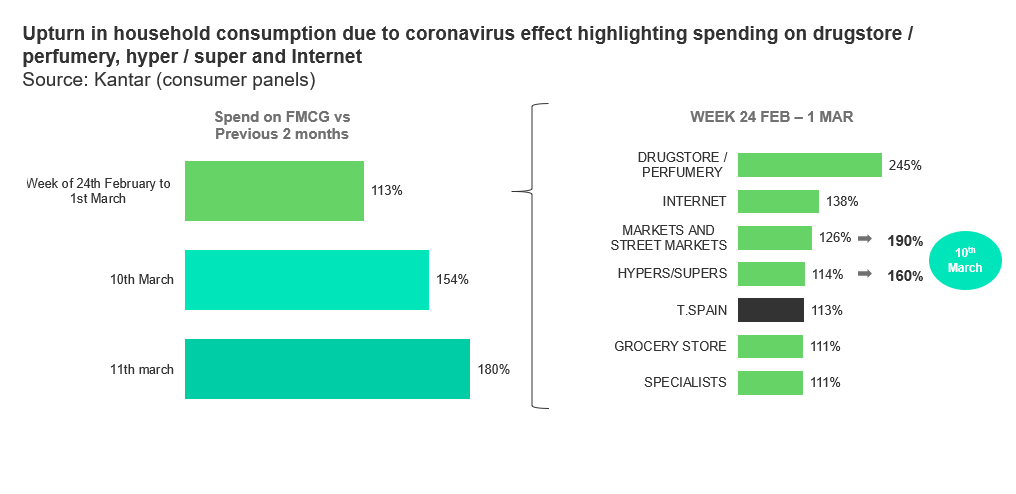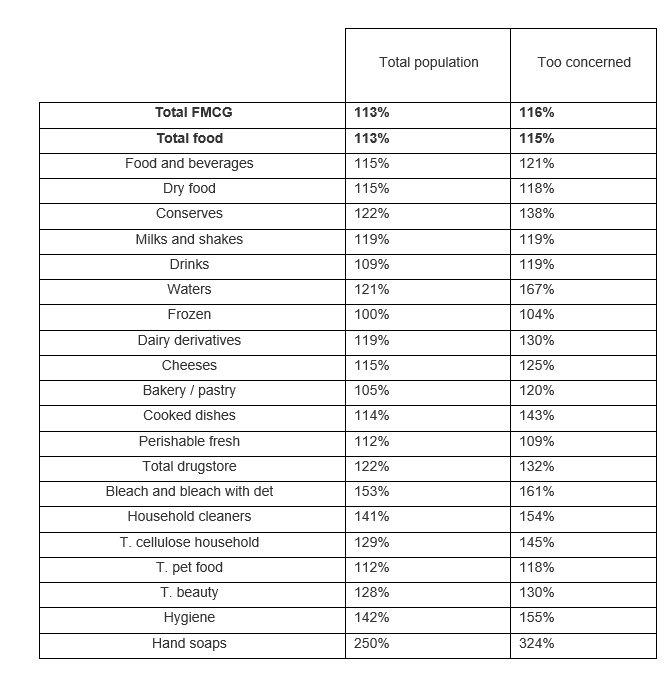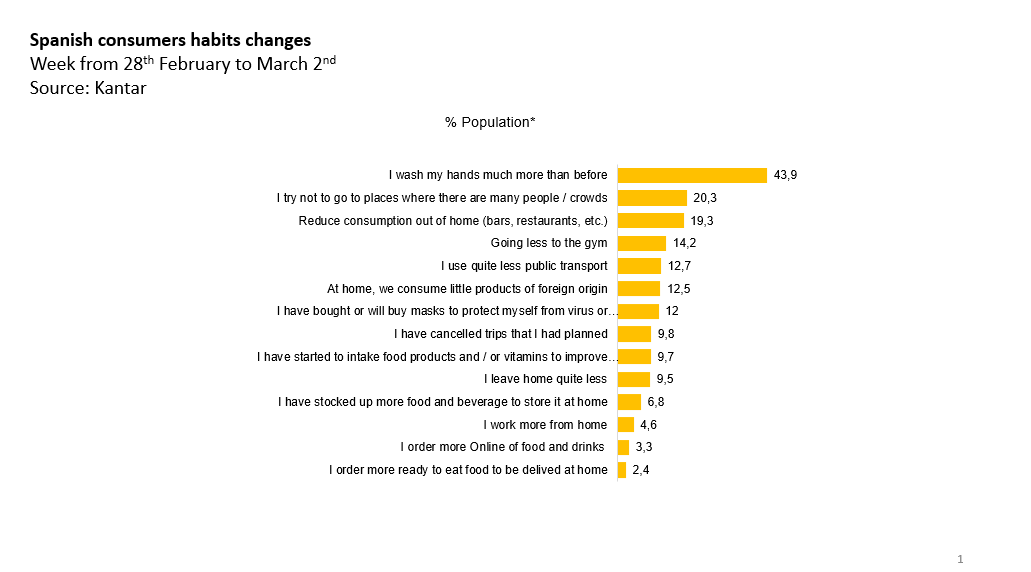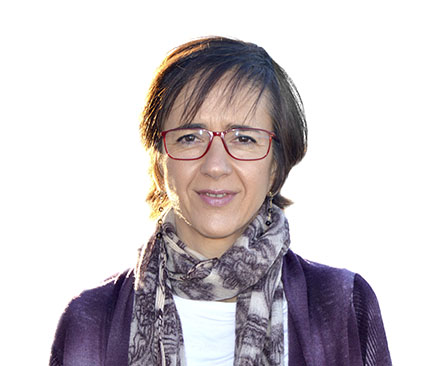Figures released recently by Kantar reveal how Spanish households have begun to modify their shopping behaviour as a result of the COVID-19 coronavirus.
It is clear that the growing concern of Spanish households is beginning to effect consumption. The week of 24 February – 1 March showed an increase of 113% in consumer spending on FMCG compared to the weekly average of the previous two months. After the announcement of extraordinary measures on 10 March, this rose to 154%, increasing to 180% the following day across all channels. On the day of the announcement, spend in hyper and supermarkets shot up 160% and in local stores it reached 190%. The increase is seen in all distribution channels.
Increased consumption of distribution channels
|
Total channels |
113% |
|
Dynamic channels |
114% |
|
Grocery store |
111% |
|
Specialists |
111% |
|
Drugstore/perfumery |
245% |
|
Markets and street markets |
126% |
|
Internet |
138% |
|
Pure players |
178% |
|
Brick & mortar |
131% |
|
Rest channels |
107% |
* Week from 24 February to 1 March. Source: Kantar (consumer panels).

*Source: Kantar (consumer panels)
This impact is not limited only to areas with a health alert and seems to be fairly consistent across Spain.
Spend increment comparing the previous two months average
|
Tuesday 10 March |
Wenesday 11 March |
|
|
163% |
175% |
AMB (Barcelona metropolitan area) |
|
164% |
223% |
CANARY ISLANDS |
|
135% |
184% |
Region I (Rest of Catalonia, Aragon and Balearic Islands) |
|
136% |
194% |
Region II (Valencian Community and Murcia) |
|
159% |
165% |
Region III (Andalusia and Badajoz) |
|
190% |
176% |
AMM (Madrid metropolitan area) |
|
136% |
201% |
Region IV (Rest of Madrid and centre) |
|
159% |
151% |
Region V (North and Castilla León: Palencia and Burgos) |
|
146% |
183% |
Region VI (Galicia, Asturias and Castilla León: León) |
|
154% |
180% |
Total Spain |
*Source: Kantar (consumer panels)
Before the declaration of special measures in Madrid, Vitoria and La Rioja, half the population declared that they were “concerned” about the impact of the coronavirus on their daily lives. This was a high level and of this, 29.2% of the total population were “very concerned”, this increased by 6 more points (35%) by March 10.
Those who were “very concerned” about the coronavirus show an above-average increase in spending on consumer products. Spend on hand soap, cooked dishes, preserves, household cellulose and household cleaners particularly stand out.
Spend increment comparing the previous two months average

*Week from 24 February to 1 March. Source: Kantar (consumer panels)
The most concerned demographic group are those over the age of 75; their level of concern doubled in one week.
The main changes in habits observed in Spanish consumers are a greater concern for hygiene – especially frequent handwashing – and an attempt to reduce their activity outside the home. This includes avoiding crowds, reducing consumption in bars and restaurants, and avoiding using public transport or going to the gym.
Spanish consumers habits change

*Week from 28 February to 2 March. Source: Kantar

